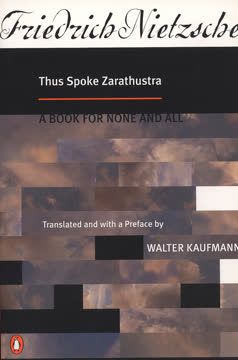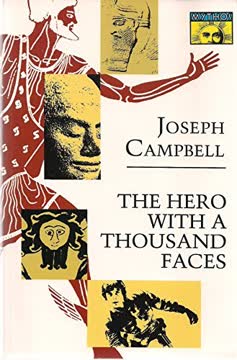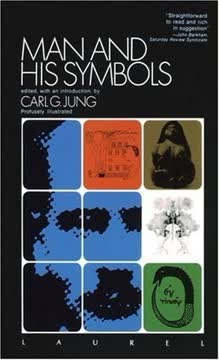Key Takeaways
1. Childhood experiences shape our psychological foundation
"I was still wholly in my childhood's world. That world became increasingly questionable, and scarcely bearable, the more I grew out of it."
Early influences. Jung's childhood was marked by vivid experiences and encounters that laid the groundwork for his later psychological theories. His early years were filled with powerful dreams, visions, and a sense of connection to something beyond the ordinary world. These experiences, often puzzling and sometimes frightening, instilled in him a deep curiosity about the human psyche and its hidden depths.
Formative events. Several key events in Jung's childhood had a lasting impact on his psychological development:
- The dream of the underground phallus, which introduced him to the concept of the unconscious
- The carved manikin he created and hid in the attic, representing his secret inner world
- His experiences with religion and spirituality, which both fascinated and troubled him
These early encounters with the mysterious aspects of the psyche set Jung on a lifelong journey of exploration and discovery, shaping his unique approach to understanding the human mind.
2. The unconscious communicates through dreams and visions
"The unconscious helps by communicating things to us, or making figurative allusions. It has other ways, too, of informing us of things which by all logic we could not possibly know."
Dream interpretation. Jung believed that dreams were not merely random firings of neurons, but meaningful communications from the unconscious mind. He developed techniques for analyzing and interpreting dreams, seeing them as windows into the deeper layers of the psyche. Through careful examination of dream symbols and narratives, Jung found that the unconscious often provided guidance, warnings, and insights that the conscious mind could not access directly.
Visionary experiences. Throughout his life, Jung had numerous visionary experiences that profoundly influenced his work:
- The vision of God defecating on Basel Cathedral, which challenged his religious beliefs
- The dream of the multi-story house, representing different levels of the psyche
- His near-death experience during a heart attack, which gave him a glimpse of the afterlife
These experiences convinced Jung of the reality and importance of the unconscious mind, leading him to develop methods for engaging with and integrating these deeper aspects of the psyche into conscious awareness.
3. Confronting the shadow is essential for personal growth
"One does not become enlightened by imagining figures of light, but by making the darkness conscious."
The shadow concept. Jung introduced the idea of the "shadow" as the hidden, often negative aspects of our personality that we tend to repress or deny. He believed that confronting and integrating these shadow elements was crucial for psychological health and personal development. The shadow contains not only our darker impulses but also unrealized potentials and creative energies.
Integration process. Facing one's shadow involves:
- Acknowledging and accepting the less desirable aspects of oneself
- Recognizing projections of one's shadow onto others
- Integrating the energy and potential of the shadow into conscious life
Jung emphasized that this process, while often difficult and uncomfortable, was essential for achieving psychological wholeness and authenticity. By embracing both the light and dark aspects of our nature, we can achieve a more balanced and complete self.
4. Archetypes and the collective unconscious influence human behavior
"The archetypes are the numinous structural elements of the psyche and possess a certain autonomy and specific energy which enables them to attract, out of the conscious mind, those contents which are best suited to themselves."
Collective unconscious. Jung proposed the existence of a collective unconscious, a layer of the psyche shared by all humans, containing universal patterns and symbols called archetypes. These archetypes, such as the Mother, the Hero, and the Wise Old Man, shape our experiences and behaviors in ways we may not consciously recognize.
Archetypal influence. Archetypes manifest in various ways:
- In dreams and visions
- Through cultural myths and legends
- In art and literature
- In personal and collective human behavior
Understanding archetypes can provide insights into human motivation, cultural patterns, and individual psychological development. Jung believed that recognizing and working with archetypal energies could lead to greater self-understanding and personal growth.
5. Integration of conscious and unconscious elements leads to individuation
"Individuation means becoming an 'in-dividual,' and, in so far as 'individuality' embraces our innermost, last, and incomparable uniqueness, it also implies becoming one's own self."
The individuation process. Jung saw individuation as the central goal of human psychological development. This process involves integrating the various aspects of the psyche, both conscious and unconscious, to achieve a state of wholeness and self-realization. Individuation is not about becoming perfect, but about becoming more fully oneself.
Steps in individuation:
- Recognizing and confronting the shadow
- Integrating the anima/animus (contrasexual aspects of the psyche)
- Engaging with other archetypal figures
- Developing a relationship with the Self (the archetype of wholeness)
Jung emphasized that individuation was a lifelong journey, not a destination. It requires ongoing effort, self-reflection, and a willingness to confront the unknown aspects of oneself.
6. Synchronicity reveals meaningful connections beyond causality
"Synchronicity reveals the meaningful coincidence of two or more events where something other than the probability of chance is involved."
Acausal connections. Jung introduced the concept of synchronicity to describe meaningful coincidences that cannot be explained by cause and effect. He believed that these events reveal a deeper order in the universe, connecting the physical world with the psychological realm.
Examples and implications:
- Jung's scarab beetle experience during a therapy session
- Precognitive dreams and visions
- Meaningful "accidents" that seem to guide one's life path
Synchronicity challenges the purely materialistic worldview and suggests a more interconnected and mysterious universe. Jung saw these experiences as potential bridges between the rational and the mystical, offering glimpses of a reality beyond our ordinary understanding.
7. Eastern and Western perspectives offer complementary views on the psyche
"Western man seems predominantly extraverted, Eastern man predominantly introverted. The former projects the meaning and considers that it exists in objects; the latter feels the meaning in himself. But the meaning is both without and within."
Cultural synthesis. Jung was deeply interested in Eastern philosophy and spirituality, seeing valuable insights that could complement Western psychological approaches. He recognized that Eastern traditions often had a more developed understanding of the inner world and techniques for exploring consciousness.
Key comparisons:
- Western focus on ego development vs. Eastern emphasis on ego transcendence
- Western linear time concept vs. Eastern cyclical view
- Western pursuit of external goals vs. Eastern cultivation of inner states
Jung believed that integrating Eastern and Western perspectives could lead to a more comprehensive understanding of the human psyche and offer new approaches to psychological healing and growth.
8. The concept of life after death reflects psychological realities
"What I am now about to tell you I consider neither a scientific fact nor a philosophical system, but simply a story of experience."
Psychological continuity. Jung approached the question of life after death not as a literal belief, but as a psychological reality that impacts how we live. He saw the idea of an afterlife as a reflection of the psyche's tendency to seek continuity and meaning beyond individual existence.
Experiential evidence:
- Near-death experiences and visions
- Dreams and visions of the deceased
- The psychological impact of belief in an afterlife
While Jung remained agnostic about the literal truth of life after death, he believed that engaging with these ideas could lead to profound psychological insights and personal transformation. He emphasized the importance of living fully in the present while remaining open to the mysteries that lie beyond our current understanding.
9. Mythology and religion are expressions of the human psyche
"Religion is a vital link with psychic processes independent of and beyond consciousness, in the dark hinterland of the psyche."
Psychological interpretation. Jung viewed myths and religious symbols not as mere superstitions, but as profound expressions of the human psyche. He believed that these stories and images reflect universal psychological truths and provide a means for individuals to connect with deeper aspects of themselves.
Mythological themes:
- Creation and destruction myths
- Hero's journey narratives
- Divine figures as representations of archetypal energies
By reinterpreting religious and mythological material through a psychological lens, Jung offered a way to engage with these traditions that was compatible with modern scientific understanding while preserving their emotional and spiritual power.
10. Scientific inquiry and spiritual exploration can coexist
"Science is the tool of the Western mind and with it more doors can be opened than with bare hands. It is part and parcel of our knowledge and obscures our insight only when it holds that the understanding given by it is the only kind there is."
Integrative approach. Jung sought to bridge the gap between scientific rationality and spiritual experience, believing that both were essential for a complete understanding of the human psyche. He developed analytical psychology as a scientific approach that could also accommodate the numinous and mysterious aspects of human experience.
Balancing perspectives:
- Empirical observation and rigorous analysis
- Openness to subjective experience and intuition
- Recognition of the limits of rational understanding
Jung's work demonstrates that it is possible to maintain scientific integrity while exploring the depths of the psyche, including its spiritual dimensions. He encouraged a holistic approach that values both objective knowledge and subjective insight in the pursuit of psychological truth.
Last updated:
FAQ
What's Memories, Dreams, Reflections about?
- Autobiographical Account: The book is an autobiographical exploration of C.G. Jung's life, thoughts, and experiences, recorded and edited by Aniela Jaffé. It covers his early years, education, and development as a psychologist.
- Inner Experiences: Jung emphasizes the importance of inner experiences, dreams, and visions over external events, highlighting moments when the "imperishable world erupted into this transitory one."
- Psychological Theories: The narrative delves into Jung's theories on the psyche, the unconscious, and the interplay between personal and collective experiences, offering a profound exploration of human consciousness.
Why should I read Memories, Dreams, Reflections?
- Understanding Jung's Legacy: The book provides insight into the foundational ideas of analytical psychology and Jung's contributions to psychology and spirituality, highlighting their relevance today.
- Personal Growth: Jung's reflections on his life and struggles offer perspectives on self-discovery and the importance of understanding one's inner world.
- Cultural and Symbolic Richness: It is rich in symbolism and mythological references, deepening the reader's understanding of the human experience and the collective unconscious.
What are the key takeaways of Memories, Dreams, Reflections?
- Unconscious Importance: Jung emphasizes the unconscious's crucial role in shaping our lives, describing his life as a story of the self-realization of the unconscious.
- Integration of Opposites: The book discusses the necessity of integrating different aspects of the self, including the conscious and unconscious, to achieve wholeness.
- Spiritual Insights: Jung explores his relationship with religion and spirituality, offering a unique perspective that challenges traditional views.
What are the best quotes from Memories, Dreams, Reflections and what do they mean?
- "A book of mine is always a matter of fate.": This reflects Jung's belief that his writings are deeply connected to his personal journey and the collective human experience.
- "We are a psychic process which we do not control.": Jung highlights the complexity of the psyche and the extent to which it influences our thoughts and actions.
- "The only question is whether what I tell is my fable, my truth.": Jung emphasizes the subjective nature of autobiography and the importance of personal truth.
What is Jung's view on dreams in Memories, Dreams, Reflections?
- Inner Guidance: Jung views dreams as vital messages from the unconscious that can guide personal development, revealing hidden aspects of the self.
- Symbolic Language: Dreams communicate through symbols, requiring interpretation to uncover their meanings, described as "a little hidden door in the innermost and most secret recesses of the soul."
- Therapeutic Value: Analyzing dreams can lead to greater self-awareness and healing, a practice Jung often used in therapy.
How does Jung describe his childhood experiences in Memories, Dreams, Reflections?
- Vivid Memories: Jung recounts various memories from his early years, highlighting their emotional significance and impact on his psyche.
- Parental Influence: He reflects on family dynamics, particularly his relationship with his parents, which influenced his views on love and trust.
- Connection to Nature: Jung expresses a deep connection to nature, seeing it as a source of inspiration and insight.
What role does religion play in Memories, Dreams, Reflections?
- Spiritual Journey: Jung discusses his evolving relationship with religion, particularly Christianity, and how it shaped his understanding of the psyche.
- God and the Unconscious: He explores the concept of God as a psychological reality, suggesting that the divine is intertwined with the unconscious.
- Critique of Traditional Views: Jung critiques conventional religious beliefs, emphasizing the importance of personal experience in understanding the divine.
How does Jung's relationship with Freud influence Memories, Dreams, Reflections?
- Intellectual Partnership: Jung describes his initial admiration for Freud and their collaborative work in developing psychoanalysis.
- Theoretical Divergence: Over time, Jung's views diverged from Freud's, particularly regarding the nature of the unconscious and the role of spirituality.
- Impact on Career: The split with Freud marked a significant turning point in Jung's career, leading him to develop his own theories.
What is Jung's concept of the "Self" in Memories, Dreams, Reflections?
- Wholeness and Integration: Jung defines the "Self" as the totality of the psyche, encompassing both conscious and unconscious elements.
- Archetypal Symbol: The "Self" is often represented by symbols such as the mandala, signifying unity and harmony.
- Path to Individuation: The journey towards realizing the "Self" is called individuation, crucial for achieving psychological health and fulfillment.
What is the concept of the collective unconscious in Memories, Dreams, Reflections?
- Universal Structure: Jung defines the collective unconscious as a part of the unconscious mind shared among all humans, containing archetypes and universal symbols.
- Archetypes' Role: These archetypes shape human experiences and manifest in myths, dreams, and cultural narratives.
- Cultural Significance: Understanding the collective unconscious helps individuals connect with their cultural heritage and shared human experiences.
How does Jung contrast Eastern and Western spirituality in Memories, Dreams, Reflections?
- Different Approaches: Jung notes that Western morality often views good and evil as separate, while Eastern traditions see them as interconnected.
- Meditation vs. Action: Eastern spirituality emphasizes meditation and inner peace, while Western traditions focus more on moral action.
- Nirdvandva Concept: Jung discusses the Indian concept of nirdvandva, or liberation from opposites, contrasting it with Western moral perfection.
How does Jung's personal journey influence his theories in Memories, Dreams, Reflections?
- Life Experiences: Jung's travels and cultural encounters shape his understanding of psychology and spirituality.
- Dream Analysis: His own dreams play a crucial role in his psychological development and theories.
- Cultural Integration: Jung's commitment to integrating Eastern and Western philosophies enriches his psychological framework.
Review Summary
Memories, Dreams, Reflections is highly praised for its deeply personal insights into Jung's life and theories. Readers appreciate Jung's honesty, intellectual curiosity, and unique approach to psychology. Many find the book fascinating and life-changing, particularly the sections on childhood, dreams, and unconscious exploration. Some struggle with Jung's mystical experiences and unconventional ideas. The book is seen as an excellent introduction to Jung's work, offering a window into his mind and the development of his psychological concepts.
Similar Books










Download PDF
Download EPUB
.epub digital book format is ideal for reading ebooks on phones, tablets, and e-readers.













